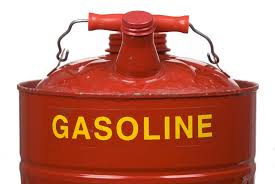
Iran Gasoline Import to Halve in Summer

It is projected that the country will need to import 9 million liters of gasoline per day in the first quarter (March 21-June 21), which will halve in the second quarter," Mohammad Reza Mousavikhah was also quoted as saying by Mehr News Agency.
According to the official, the amount of gasoline stored in the country indicates a rise of 1.5% compared with last year's corresponding period while power plants' diesel reserves have doubled in comparison to previous years.
"Were it not for the development of Persian Gulf Star Refinery in the southern province of Hormozgan, NIOPDC would have to import 28 million liters of the strategic fuel daily," the official said, adding that cutting down on gasoline import is a top priority of Oil Ministry.
The refinery is being developed in three phases with a combined processing capacity of 360,000 barrels per day of condensate, a type of ultra light crude extracted from the giant South Pars Gas Field in the Persian Gulf.
"Once fully operational, the refinery will produce 36 million liters of high-octane gasoline as part of efforts to wean Iran off the import of the fuel product," he said.
--- Gasoline Vapor Recovery
According to Mousavikhah, NIOPDC will invite bids in a month for investment in a gasoline vapor recovery plan.
“The gasoline vapor recovery plan is in need of investment. Thus, an invitation will be issued between April 21 and May 21 to attract interested financiers,” he added.
The recovery of vapors of gasoline or other fuels prevents air pollution. This is often done (or required by law) at filling stations to reduce noxious and potentially explosive fumes.
Mousavikhah noted that NIOPDC has held negotiations with Tejarat Bank, which is one of the parties interested in making investments in the project.
Referring to the plan, known as Kahab in Iran, as an eco-friendly project for recovering gasoline vapor, the official said the technology has been acquired from foreign companies and the plan has not so far been completely implemented in Iran.
According to Mousavikhah, a similar plan has been started in Isfahan Province at a cost of over $2.5 million but could not continue due to the need to install a €300,000 pump.
Stressing that prior to launching such a plan, its feasibility should be verified, he said, “We are looking for an investor who can use foreign know-how or partner to implement the project.”
Mousavikhah underscored that the government will guarantee the purchase of gasoline output and the plan is projected to return the investment plus profit within three to seven years of operation.
--- Notable Rise
Commenting on the notable rise in gasoline consumption during the 13-day period marking Norouz (the Iranian New Year), Mousavikhah said gasoline consumption hit a record 1.2 billion liters.
"Iranians burnt an average of 97.1 million liters of gasoline per day from March 21 to April 2, marking a 13.3% jump compared with the corresponding period of last year," he said.
"The country needed 80 ml/d of gasoline on average in 2017, of which 15 to 20 million liters had to be imported. Nonetheless, as more units in PGSR go on stream, a lesser amount of fuel will be imported."
Oil experts, including Mousavikhah, believe gasoline consumption is on the rise not only due to an increase in automobile production and import, but also because of low prices.
At around 25 cents per liter, gasoline is relatively cheap in Iran, even without considering metrics such as taxes and purchasing power parity.
Iran's gasoline is the fourth most affordable in the world after that of Venezuela, Kuwait and Sudan, according to Global Petrol Prices.


Trump weighs using $2 billion in CHIPS Act funding for critical minerals

Codelco cuts 2025 copper forecast after El Teniente mine collapse

Electra converts debt, launches $30M raise to jumpstart stalled cobalt refinery

Barrick’s Reko Diq in line for $410M ADB backing

Abcourt readies Sleeping Giant mill to pour first gold since 2014

Nevada army depot to serve as base for first US strategic minerals stockpile

SQM boosts lithium supply plans as prices flick higher

Viridis unveils 200Mt initial reserve for Brazil rare earth project

Tailings could meet much of US critical mineral demand – study

Kyrgyzstan kicks off underground gold mining at Kumtor

Kyrgyzstan kicks off underground gold mining at Kumtor

KoBold Metals granted lithium exploration rights in Congo

Freeport Indonesia to wrap up Gresik plant repairs by early September

Energy Fuels soars on Vulcan Elements partnership

Northern Dynasty sticks to proposal in battle to lift Pebble mine veto

Giustra-backed mining firm teams up with informal miners in Colombia

Critical Metals signs agreement to supply rare earth to US government-funded facility

China extends rare earth controls to imported material

Galan Lithium proceeds with $13M financing for Argentina project

Kyrgyzstan kicks off underground gold mining at Kumtor

Freeport Indonesia to wrap up Gresik plant repairs by early September

Energy Fuels soars on Vulcan Elements partnership

Northern Dynasty sticks to proposal in battle to lift Pebble mine veto

Giustra-backed mining firm teams up with informal miners in Colombia

Critical Metals signs agreement to supply rare earth to US government-funded facility

China extends rare earth controls to imported material

Galan Lithium proceeds with $13M financing for Argentina project

Silver price touches $39 as market weighs rate cut outlook

















